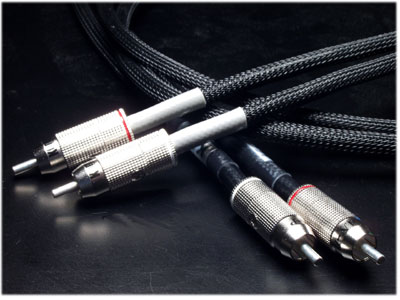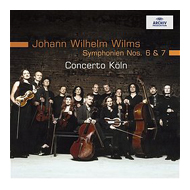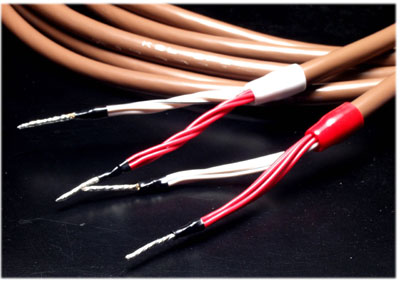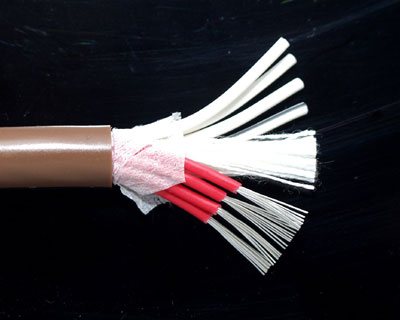You are reading the older HTML site
Positive Feedback ISSUE
18
march/april 2005
kondo
KSL signal wires
as reviewed by Marshall Nack

|
MARSHALL NACK'S SYSTEM
LOUDSPEAKERS
ELECTRONICS
SOURCES
CABLES
ACCESSORIES
|
The Organ Effect
Seasonally, I have to bring my cello to the luthier for repair. When the temp and humidity level undergo big changes, like when the heat comes up in the fall, the wood of the instrument dries out, contracts and stresses the glued seams along the edges. Last November, I had two big gaps on either side of the neck. The instrument in need of repair is not so pleasant on the ear. It's thin, often shrill, and pointed. Notes start fast with a naked fundamental that decays quickly. When you go up the scale and switch strings sound quality changes. In this situation there's no hiding; the slightest intonation mistake is obvious. Over a period of a few months, one forgets the original beauty of the tone, so that after a repair of the seams and re-alignment of the bridge, I'm always surprised by the richness restored to the sound. When I get the instrument back home, the first bowing reveals what was missing. The "organ effect" is back, and it makes you rotate your head around 360 degrees in disbelief for several minutes. The change is so great, it's as if you have a higher quality instrument in your hands. Those air gaps around the neck were letting sound energy escape which should have been peculating inside and then released to complete the instrument's timbre.
What a difference in sound quality. The fundamental is now deep inside an overtone structure. Activate any note and all of the strings are set in motion. Should you happen to touch the instrument's body, you'll feel it rockin-n-rollin, alive with complex vibrations. So many sympathetic resonances have been excited that a sound as rich as a whole choir issues forth, all by its lonesome. This "choir," or organ effect as it is commonly known, starts just as fast, but decays leisurely. Where's all that sound coming from?
This is one of the major differences between the Kondo and most wires. Every time I strayed I was reminded of what was missing—the organ effect.
Me: "You know, I've been listening to these cables for about a month and I haven't taken any notes."
She: "You just put them in and decided you liked them."
Me: "The sound is there. It's right. It's just that I can't find a hook, some form of eccentricity, to describe their character."
The Kondo are all about natural balance and even-handedness—there's nothing extraordinary or eccentric about them—and this was immediately apparent. A casual audition of 30 seconds told me enough to know the KSL-LPz silver interconnect manifested the kind of unheralded naturalism I have been questing for.
It all began about a year ago with the Lamm ML1.1 mono-block amps and the Lamm L2 Ref pre-amp. The Lamm products taught me about the simple purity of natural sound, the primacy of frequency integration and temporal coherency. And while they are the most realistic components I've yet come across, at the same time they are wholly un-sensational. The Kondo wires follow suit.
While we're talking about even-handedness, I was pleasantly surprised to find many of these same qualities in the Audience AU24 interconnect. The AU24 has lots of flesh on well-integrated images, little in the way of glare or grain, and a smooth, full tonal palette. However, the schoolyard I've been playing in has stronger contenders, albeit at much higher price tags. Compared to them, the AU24 has a metallic hue lurking in the background and is a little on the cool, dry side. It lacks the liquidity and suppleness of the big boys. In the end, it is a cable that commits no egregious sins and has a lot going for it. Considering its $500/meter MSRP, it's a great buy, but a cable needs to bring more to the table to stay on this court.
Into this playground comes the Kondo.
Integration and Body

I eagerly opened The New York Times Arts and Leisure section featuring the Year's Top Classical CD Releases. Among the surprises listed was Johann Wilhelm Wilms Symphonien Nos. 6 & 7 (Archiv B0002998-02). This nineteenth-century composer reminds me of Robert Schumann, or perhaps the early symphonies of Franz Schubert, who were roughly contemporaries, but Wilms is more interesting. The No. 6 is a busy work, with dense musical counterpoint and much complexity. The recording has very full, weighty sound, and the Concerto Koln ensemble displays excellent intonation and articulation. These guys can hold their own alongside the finest modern orchestras. You wouldn't know it was period instruments if it wasn't for the occasional warble from the French horns. You may want to consider adding this disc to your demo cache—the only reservation is the narrow stage width.
The Wilms No. 6 served as the jumping off point for comparisons between cable A (a composite of my references) and B (Kondo). Cable A has a punchy, tight bass which is heard kind of riding under the music, providing a solid foundation and support under everything, while staying clear of the midrange and treble. Many folks have this type of bass in mind when they think of quality low-end. The mids are clear, uncongested and a little lean. The treble is thinner yet. You notice its extension, and again you hear it off on its own, apart from the mid and bass. All of these characteristics promote clarity, good dynamics and an open sound with lots of detail. Tonal balance is even, except for some hot spots in the "exciting" top end. The tone of the first violins is a bit of a problem because of the thinness on top; woodwinds fare better. Cable A is a first-class cable and a stand-in for many, including some highly admired ones. Actually, Cable A represents the current trend in mainstream high-end taste: clarity, detail, speed and slam are the priorities.
Throw in one pair of KSL-LPz interconnects and you'll notice right away what's not there, how literally nothing calls attention to itself. Music flows out to you as full-spectrum units. The bass is nimble, tuneful, and there's just as much of it, but you won't hear it apart from the whole—it is reluctant to call attention to itself. The mids are beefed up, with luxuriant warmth and lots of inner life. Most of the sound is concentrated here, with the tonal center a little lower in the midrange, hence it's a little darker than many cables. The treble is rounded and soft, wholly without edge or roughness. You will notice there seems to be less treble—because it doesn't call attention to itself, you may question its extension—just as I did with the Lamm gear. I wondered about this and made a special point to find out how Mother Nature handled it. That's how I came to appreciate what the KSL was doing. Yes, it's fully extended, but it's like that organ effect mentioned above. Integrated sound always makes the frequency extremes less noticeable, and the Kondo's blended sound is the most fully realized frequency integration I've yet come across. It disdains the usual surgical dissection into component parts. In comparison, Cable A sounds like the cello that needs to go to the luthier.
The KSL is on the smooth side both in terms of surface texture and frequency transitions. When required, it can be burnished and edgy, but not too edgy. There is not much to comment on regarding frequency problems: it's straightforward, with no highlighting, no artifact, and no exaggerations. Frequencies are nearly ideally apportioned, with just the right amount of bloom—it is complex and rich with a full overtone structure, without pushing into a pervasive coloration. The bloom and decay are so right you won't even notice them. There is no discernable grain structure. All of this allows the unique timbre of each instrument to come through. Oboes were marvelously quacky and duck-like, bassoons made their characteristic froggy gurgles. Violin strings in the Wilms sound more like cat gut. There's not even a thought of questioning string or woodwind tone.
It's easy to hear how quiet and noise-free the treble is. Noise in this band is usually the most noticeable. What is new to me is the noise that often lurks in the mid-band. This is closer to a hash-like noise, rather than the edginess or stridency of treble distortions. A couple of swaps of the KSL-SPc and some quality speaker wire brought this home. The SPc has little or no noise—this is just another of the differences that allow you to drop more mental guardrails.
The Shape of Sound
There is a not so subtle point of difference which gets short shrift in the high-end press, and that's the shape of the sound—how it arrives and impinges on your ear, how you perceive it over time, what it feels like. Apart from being thin or fleshy, sounds can be pointed or rounded. The typical cable has a duck-like shape: the bottom is wider than the middle, spreading as it goes lower: the middle is fairly uniform: the treble gets thinner as the frequency ascends. Very often the result is a too thin, too focused, pointed treble, especially if the cable doesn't have frequency integration. This is not the way it's supposed to be. The KSL offers an alternative, which is corroborated in nature. Very high piercing sounds, like that from a triangle, can be focused, cut right through a full orchestra, and still make a rounded impression. Sho ‘nuff, this is what it sounds like out there on the street—these sounds don't have pointed surfaces. Once more, it is the difference between the broken and repaired cello.
Finally, the KSL is devoid of aberrations and affectations. You get less Hi-fi type imaging and more clarity of the musical line. Many wires throw individual instruments or sections at you in a spotty fashion, spread discretely all over the stage, unrelated to each other, as if music really happened in bits and pieces—similar to how they isolate frequencies.
KSL-LPz interconnect
The KSL-LPz interconnect is the brainchild of the legendary audio designer Hiroyasu Kondo, who founded Audio Note Japan in 1976. The company's original claim to fame was their silver wire; this was back when no one else was thinking about the sound quality of wire. In the 1970's Audio Note made the world's first hand-wound silver wire transformer—and that put them on the map. Word has it that Kondo-san is never satisfied and never rests. A man of endless curiosity, audio is always in the foreground. For example, he noticed that powerful autos had V8 engines and thought, "There might be something in that for cable design." Hence, his current top-line interconnect has 8 cores or structures. There is a long history here. Over 25 years of R&D in wire material and structure go into these products.
The KSL-LPz interconnect cable is 36 strands of 99.99% pure silver x 8 cores, with a shield cable of 0.09mm diameter making a total of 288 strands of pure silver per channel.
KSL-Dig digital cable
Many cable manufacturers postulate theories about optimal digital signal transmission having special needs compared to analog. If you are able to follow their sometimes convoluted, often brilliant, ideas, many make a lot of sense—a priori. You must go and put those cogitations to the test. Sometimes the result is good, sometimes not. Eventually one becomes theory-wary, so that today I pay little attention to the design and engineering aspects of cable manufacture and let my ears do the walking. Kondo is refreshingly unpretentious about this—there's no theory. In fact, the KSL-LPd digital cable is identical to the LPz interconnect; they're interchangeable, and it is the best digital cable I've heard to date.

KSL-SPz speaker sable
The KSL-SPz speaker cable spoke in terms of refinement—its delicacy and inner life was most impressive. There was no highlighting, no artifact, just a very naturalistic, smooth frequency response. Again, like the other KSL wires, most of its sound is in the mid-range. Its tonal balance was a little lighter than the other KSL wires. The other Kondo speaker wire, the SPc, made from copper, is also midrangy, but tonally like the silver interconnects. Sure the SPc wasn't as refined and transparent, but it brought more low-end weight, which I was looking for, and its sound has a strong physical presence.

KSL SPc speaker cable
The manufacturer's website says the SPc was designed to compensate for the "sound roughness" and "unpleasant edginess and ear scratching sharpness" of digital sound. Yes, the SPc sounds smooth, but not to excess, and it is MUCH BETTER than everything I've tried, except some of the mega-buck speaker cables. The inexpensive SPc ($800 for an eight foot stereo pair) gives you a goodly measure of the KSL virtues and is an exceptional high-end bargain.

The KSL-SPz is 10 strands of 99.99% silver x 8 cores, making a total of 80 strands pure silver per channel. The copper is the same construction except it uses OFC. This is the only copper wire in the Kondo line; it is also the only copper cable using KSL technology.
Fit-n-Finish
The philosophy behind the voicing of the cables is apparent in their physical appearance. Black dielectric mesh covers skinny, lightweight, very flexible conductors, which terminate in proprietary silver plated RCAs. They don't exactly jump up and shout, "I'm a serious, expensive cable; you can see that from my appearance." The speaker cable looks even more humble. It is equally as thin as the interconnect, but as limp and flexible as a wet noodle. Its weight is negligible. All of the cables are directional: the interconnect end with the black shrink-wrap is "out," and the one with the grey wrap is "in." A tag stuck to the speaker wire indicates direction. The interconnect has a shrink-wrap KSL label affixed with a serial number on it. The KSL-SPc appears unmarked, but if you look VERY closely it does say Kondo KSL-SPc in silver lettering on the light grey jacket—the writing is fine, but it is there.
Most manufacturers advertise that their products use the highest purity six nines copper or silver. Kondo agrees the purity of the metal matters, and then looks at additional factors; like a special process to draw the wire from the metal block; like letting it cure before use. The metal destined for conductors is set aside for up to twenty years so it can become "age-annealed," healed, so to speak.
"All Kondo silver wire manufactured by Audio Note Japan is 99.99% pure silver coated with six coats of a special polyurethane varnish applied immediately after drawing. This prevents oxidation and provides mechanical surface damping of the proper 'Q'. The wire is then age annealed to enhance the crystal boundary chemistry. Remember that the music signal has an electro-chemical component. A/C current causes chemical changes in the wire alloy. Age annealed copper and silver wires have a purer and gentler sound than the hot or cold or chemically annealed wires."

The silver RCA jacks, like most everything with the ANJ logo, is made in-house.
It should be noted that the speaker wires are provided with tinned silver solder termination. Kondo-san believes this sounds better than injecting a dissimilar metal spade between the conductor and the binding posts. The USA importer (SOS) will terminate with spades on request. I requested it on the SPc and Steve Klein explained how each of the 80 conductors must be stripped, a long and laborious task, which may take, up to 6 hours, and then soldered to Cardas spades. Again, from Steve, "Each strand has a clear coating to prevent oxidation so you have to take off the coating before you can tin the cable. The strands are so thin you have to be VERY careful not to break any…" Considering the work involved, the additional $100 fee seems quite reasonable.
All wires come in a clear, hard plastic case with snap-loc clamps. The wire is twist-tied onto a sheet of cardboard and individually numbered (except the SPc). There's an info sheet on the backside. Extra care in packing for shipping was evident in the liberal use of bubble wrap and box-within-a-box packaging. A silica gel packet is enclosed to keep the cables nice and dry in their travels.
Conclusion
The main quality that distinguishes the Kondo cable line is their lack of a distinguishing quality. Everything it does is in balance and harmony. The KSL voicing bespeaks of the genuine article—this "rightness" was immediately apparent—and they continue an alternative pathway leading to realism and away from Hi-fi. For me, a new reference for natural, believable sound is now on the premises. The KSL will find their niche among classical and acoustic jazz aficionados with a penchant for a close approximation of what they hear in the real world and an antipathy for sound effects. Their underlying character is like life—warm, continuous, holistic, and vital while still being neutral and accurate. They capture the ebb and flow of music.
Given the high price of the KSL silver, a lot of us cannot spring for them. However, I want to reiterate that the KSL-SPc copper speaker wire deserves special mention as bang-for-the-buck value. While not as refined, subtle, or with as much inner life as the SPz, it nonetheless has the hallmarks of Kondo sound. Once the SPc went in, it sidelined all of my reference speaker wires, much as the LPz and LPd did to the bulk of my interconnects and digital cables. The SPc, at $800/eight foot stereo pair, can face off with wires all the way up to the $3000 price point. Marshall Nack
KSL-LPz interconnect cable
Retail: $3000 1m
KSL-LPd digital cable
Retail: $1500 1m
KSL-SPz speaker cable
Retail: $500 stereo foot, $4000 8 foot
KSL-SPc speaker cable
Retail: $50 linear foot, $800 8 foot
Audio
Note Japan
web address:
www.audionote.co.jp
US Importer
Sounds
Of Silence
14
Salmon Brook Dr.
Nashua,
NH 03062
TEL: 603. 888. 5104
email address:
[email protected]
web address:
www.soundsofsilence.com
